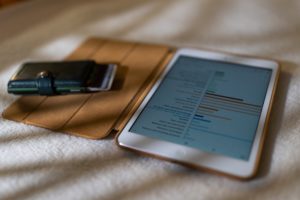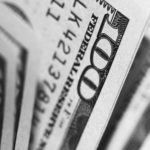How can banks afford to let millions of customers open a free checking account? Some services, such as interest checking and reward checking accounts, can even earn you some extra money from interest. If you don’t know the business model of banks, you may be wondering if they’re seeing any profit on their end.
While it may not be obvious, banks can’t make money without having your money first. There are two ways that banks can actually make a good profit from your free checking account: loans and fees.
Loans
Banks aren’t just piggy banks where your money sits untouched until you decide to withdraw it. Banks are actually borrowing your money to give themselves a higher profit in return. Have you ever taken out a personal loan from the bank and wondered where they got that money from? Your bank was able to fund your loan using the deposits from other account holders. Most people will take out a personal or home loan at some point in their lives, so the bank is getting a lot of business this way.
Any type of loan comes with interest, and this is how the bank makes its revenue. The amount of interest that the bank gets from their loans will always be greater than the interest that is paid back to you for keeping money in your checking account. Since they’re using this practice for so many customers, it’s no wonder why banks are able to make so much money.
For example, say you have $2,000 in your checking account. A customer comes into the bank needing a loan of $1,000. The bank will give out this loan with an interest rate of 10%. At the end of the loan’s term, the total balance paid with interest will be $1,100. If you have a free checking account, the bank gets to keep that extra $100 as profit.
This is also why banks require you to have a minimum balance in order to open a checking account. Under federal regulations, banks need to keep a certain amount of money on hand to accommodate all of their daily transactions. If they were to loan every single dollar out, the money in their customers’ checking accounts and their vaults would be depleted very quickly.
Fees
Checking account fees make up a large portion of the bank’s income, bringing in $6 million in 2015 just from ATM and overdraft fees. If you’re smart with your money, you may never have to pay one of these fees, but some may be unavoidable. Fees associated with checking accounts include:
- Application fees. Whenever you apply for a loan, most banks require an application fee. Additionally, banks can include this fee in your loan’s principal and you’ll have to pay interest on it.
- Lost or stolen card fees. If you need a new debit card, a new one will have to be mailed to you at your expense.
- ATM fees. In certain situations, such as being on vacation in an unfamiliar place, you may not be able to find an ATM owned by your bank. Using a different one will cost you a small fee, both from your bank and the bank who owns the ATM.
- Account fees. While free checking accounts are still more common, some banks may charge a “maintenance” fee just for owning a checking account.
- Overdraft fees. A credit card payment late by even two minutes can land you with an overdraft penalty. It happens to everyone, but doing it often can be very costly. The average charge for having your account balance in the negative is $35 a day, but may be higher depending on your bank.
- Paper statement fees. If you opt to have your billing statements mailed to you instead of checking them online, you can expect to pay a small fee for this service.
- Inactivity fees. Banks can charge you if you haven’t made any deposits or withdrawals on your account for an extended period of time.
- Late loan payment fees. If you miss a payment on your loan, you’ll usually have to pay anywhere from $10-$100 depending on your bank’s policy.
- Loan prepayment fees. Paying off a loan early is not always a good thing, especially for your bank. It causes them to lose money in interest, so they will often charge you a fee to make up for it. The higher the interest rate on your loan, the higher this penalty will be.
When you take these factors into account, your free checking account is not actually “free.” Recent spikes in interest rates and the introduction of more fees may seem unfair to the bank’s loyal customers. However, banks are the safest place to store your money, and the peace of mind this brings is well worth the price of a few small charges.






